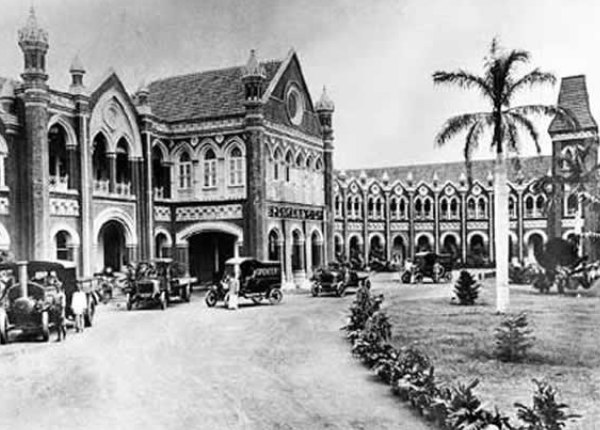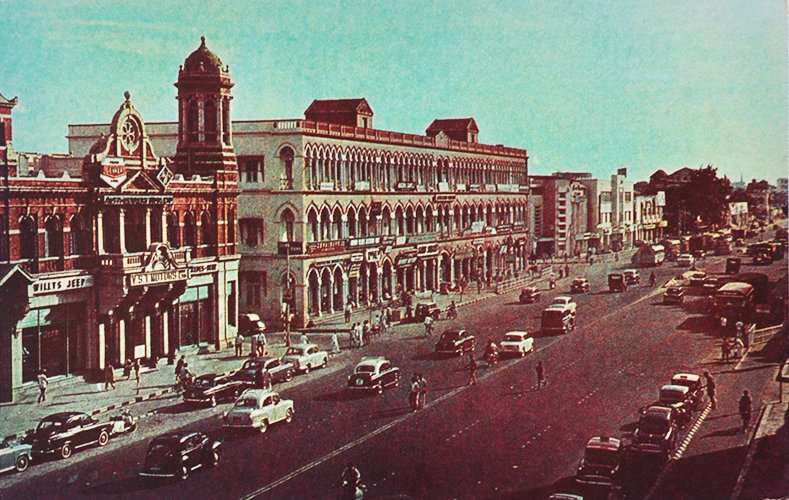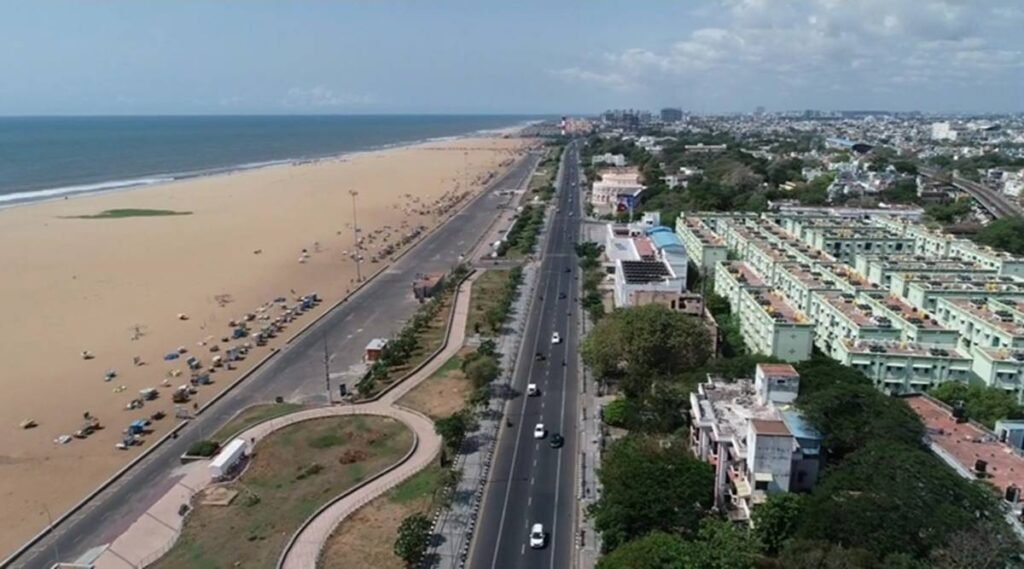Chennai Then and Now
Chennai Then
Chennai, the capital of Tamil Nadu, is a major city located on the Coromandel Coast of the Bay of Bengal in southern India.
Originally, the city was known as Madras, a name believed to have native origins.
Some scholars trace the name to Madraspattinam, a fishing village situated north of Fort St. George, while others point to the port of Mādarasanpattanam mentioned in a 1367 inscription from the Vijayanagara Empire era.
The British East India Company acquired the town in 1639, and the name “Chennai” is believed to have derived from Chennappa Nayaka, a Nayak ruler.
The name “Chennai” was first officially used in a deed in 1639, and later references to the area as “Chennai” appeared, including in land grants to the Chennakesava Perumal Temple in 1646.

However, it wasn’t until 1996 that the Tamil Nadu government officially renamed the city from Madras to Chennai.
Despite the change, the name Madras is still occasionally used for the city, and various institutions or places are named after it.
Related Article: Fukuoka Then and Now
Chennai History
Chennai, located on the Coromandel Coast of the Bay of Bengal in southern India, has a rich and diverse history that spans thousands of years.
Archaeological evidence, including Stone Age implements found near Pallavaram, suggests that the region was home to prehistoric communities.
Over the centuries, Chennai, originally part of the ancient Tamil region of Tondaimandalam, became an important cultural and economic center.
By the 2nd century CE, the area was under the rule of the Early Cholas, followed by the Pallavas, who ruled from the 3rd to the 9th centuries.
Related Article: Nagoya Then and Now
The Pallavas contributed significantly to the region’s architectural heritage, particularly in Mahabalipuram and Pallavaram, which were developed during the reign of Mahendravarman I.
In the 13th century, the region came under the control of the Pandya dynasty and later, the Vijayanagara Empire in the 15th century.
In 1522, the Portuguese arrived in Chennai and established the port of São Tomé, named after St. Thomas, who is believed to have preached in the region.
The Dutch also established a presence near Pulicat in the early 1600s. However, it was the British who significantly shaped the modern history of Chennai.
Related Article: Osaka Then and Now

In 1639, Francis Day of the British East India Company obtained land from the Vijayanagar Empire, establishing a trading post near the fishing village of Madraspatnam.
This settlement grew rapidly, and in 1640, the British constructed Fort St. George, which became the foundation of the colonial city of Madras.
By the 18th century, Madras had become a significant British colonial stronghold, resisting French and Mysorean attacks and eventually becoming the capital of the Madras Presidency, which governed much of southern India.
During British rule, Madras became a major naval and administrative center for the British East India Company and later the British Crown.
Related Article: Busan Then and Now
The city’s infrastructure was developed with the establishment of railways in the 19th century, connecting it to other major cities like Bombay and Calcutta, and enhancing trade and communication.
After India gained independence in 1947, the city remained the capital of the newly formed Madras State, which was later renamed Tamil Nadu in 1968.
In 1996, in an effort to decolonize its identity, the government officially changed the name of the city from Madras to Chennai.
Related Article: Taipei Then and Now
Throughout its history, Chennai has faced various challenges, including natural disasters.
In 2004, the city was hit by a devastating tsunami that claimed hundreds of lives and altered the coastline.
A decade later, the 2015 Chennai floods submerged large portions of the city, resulting in widespread destruction and loss of life.
Related Article: Ho Chi Minh City Then and Now
Despite these challenges, Chennai has grown into one of India’s largest and most vibrant cities, known for its rich cultural heritage, diverse population, and economic significance.
Chennai’s transformation from a small fishing village to a colonial stronghold and eventually a thriving modern metropolis reflects the city’s historical importance and resilience.
Today, it stands as a symbol of India’s complex history, where ancient traditions coexist with modern developments.
Related Article: Manila Then and Now
Chennai Now

Chennai, formerly known as Madras, is the capital of Tamil Nadu, located on the southeastern coast of India along the Coromandel Coast of the Bay of Bengal.
It stands as the most significant city in the state, both politically and economically, and is the sixth-most populous city in India according to the 2011 census.
The city forms the heart of the Chennai Metropolitan Area, which is the 35th-largest urban agglomeration in the world.
Related Article: Jakarta Then and Now
The metropolitan area includes the Chennai district and its adjoining suburbs, contributing to its status as one of the largest metropolitan economies in India.
As a major urban center, Chennai is also home to one of the largest expatriate populations in India and has the fifth-largest urban economy in the country.
The city is considered a gateway to South India, with a well-established reputation as a destination for both business and leisure.
Related Article: Guangzhou Then and Now
It is ranked as the 36th most-visited city in the world as of 2019, reflecting its significance in the global tourism landscape.
Chennai is regularly listed among the best cities to live in India due to its rich cultural heritage, infrastructure, and relatively high safety levels, earning it recognition as one of the safest cities in the country.
Chennai is also renowned for its thriving medical tourism industry, often referred to as “India’s health capital” due to its concentration of world-class medical facilities.
Related Article: Shenzhen Then and Now
The city is a major hub for India’s automobile industry, earning the nickname “Detroit of India,” and houses numerous automobile manufacturing plants.
The culinary scene in Chennai has garnered international recognition, with the city being the only South Asian city included in National Geographic’s “Top 10 Food Cities” in 2015.
In 2017, Chennai was added to the UNESCO Creative Cities Network (UCCN), acknowledging its cultural and artistic contributions.
Related Article: Beijing Then and Now
Furthermore, the city plays a significant role in the Indian film industry, particularly the Tamil-language film industry, which is one of the largest in the country.
In addition to its economic and industrial prowess, Chennai is a city of historical and cultural significance, marked by its diverse population, traditional arts, and vibrant festivals, making it a global center for commerce, culture, and tourism.
Related Article: Mumbai Then and Now
FAQs
Chennai is famous for being a major cultural, economic, and educational hub in South India.
It is known for its thriving automobile industry, medical tourism, historical landmarks, vibrant arts scene, and the Tamil-language film industry (Kollywood).
The city is also renowned for its beautiful beaches, temples, and rich culinary traditions.
The primary language spoken in Chennai is Tamil, which is the official language of Tamil Nadu. English is widely used for business and education, and some residents also speak Telugu, Hindi, and other regional languages.
The name Madras was changed to Chennai in 1996 to reflect the city’s Tamil heritage and to remove the colonial influence.
“Chennai” is derived from Chennapattanam, the name of a village near the area where the city was originally founded.
Chennai is generally considered more affordable compared to other major Indian cities like Mumbai or Delhi, especially in terms of real estate and daily living expenses.
However, it can still be expensive depending on the area and lifestyle, particularly in upscale neighborhoods and for imported goods.






























